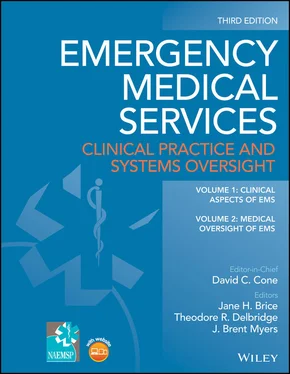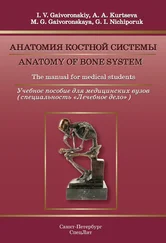Many national organizations supported further federal involvement, both in establishing EMS program goals and in providing direct financial support. After several attempts at passing federal EMS legislation, a modified EMS bill was passed with support from numerous public and professional groups. President Nixon vetoed this bill in August 1973, based on the conservative philosophy that EMS was a service that should be provided by local government, and the federal government should neither underwrite operations nor purchase equipment. Additional congressional hearings led to the reintroduction of a bill proposing an extensive federal EMS program, based on the rationale that individual communities would not be able to develop regional systems without federal encouragement, guidelines, and funding. Finally, in November 1973, the Emergency Medical Services Systems Act was passed and signed. It was added as Title XII to the Public Health Service Act, to address EMS systems, research grants, and contracts. It also added a new section to the existing Title VII concerning EMS training grants [31].
The law was reauthorized in 1976, 1978, and 1979, with a continuing goal to encourage development of comprehensive regional EMS systems throughout the country. The available grant funds were divided among the four major portions of the EMS Systems Act: Section 1202 – Feasibility studies and planning; Section 1203 – Initial operations; Section 1204 – Expansion and improvement; and Section 1205 – Research. Applicants were encouraged to build on existing health resources, facilities, and personnel. The EMS regions were ultimately expected to become financially self‐sufficient. Therefore, a phase‐out of all federal funding initially targeted for 1979 was extended to 1982. This EMS program was administered in DHEW through the Division of Emergency Medical Services, with David Boyd, the medical director of the Illinois demonstration project, named as director. The law and subsequent regulations emphasized a regional systems approach, a trauma orientation, and a requirement that each funded system address the 15 “essential components” ( Box 1.2). Medical oversight was not one of the 15 components, although subsequent regulations encouraged and then required medical oversight.
Box 1.2The Fifteen Essential EMS Components.
1 Manpower
2 Training
3 Communications
4 Transportation
5 Facilities
6 Critical care units
7 Public safety agencies
8 Consumer participation
9 Access to care
10 Patient transfer
11 Coordinated patient record‐keeping
12 Public information and education
13 Review and evaluation
14 Disaster plan
15 Mutual aid
Source: Washington, DC: Department of Health, Education, and Welfare, Division of Emergency Medical Services, 1973.
1973–1978: Rapid Growth of EMS Systems
In 1974, the Robert Wood Johnson Foundation allocated $15 million for EMS‐related activities, the largest single contribution for the development of health systems ever made in the United States by a non‐profit foundation. Forty‐four areas of the country received grants of up to $400,000 to develop EMS systems [32]. This money was intended to encourage communities to build regional EMS systems, emphasizing the overall goal of improving access to general medical care, in addition to the original focus on trauma. The money was provided over a 2‐year period to establish new demonstration projects and develop regional emergency medical communications systems [33].
In early 1974, a newly reorganized DHEW Division of Emergency Medical Services began implementing the legislative mandate. Adopted from earlier experiences, the basic principles were that an effective and comprehensive system must have resources sufficient in quality and quantity to meet a wide variety of demands, with the recognition that the discrete geographic regions established must have sufficient populations and resources to enable them to become self‐sufficient eventually.
Each state was also to designate a coordinating agency for statewide EMS efforts. Ultimately, 304 EMS regions were established nationwide. By 1979, 17 regions were fully functional and independent of federal money. However, of the 304 geographic areas, 22 had no activity and 96 were still in the planning phase [34].
In the regulations, David Boyd strictly interpreted the congressional legislative intent of the EMS Systems Act to mandate that all regions adopt all 15 essential components of the legislation. Regions were limited to five grants, and with each year of funding, progress toward more sophisticated operational levels was expected. By the end of the third year of funding, regions were expected to have basic life support (BLS) capabilities, which required no physician involvement. ALS capability, which was expected to perform traditional physician activities and have physician oversight, was expected at the end of the fifth year. The use of BLS and ALS terminology in the regulations spread widely. However, the original definitions that corresponded directly to the funded emergency medical technician‐ambulance (EMT‐A) and paramedic levels of training quickly became elusive as states created variations in the EMT‐A and paramedic levels. Nationally, the EMT‐A level required no medical involvement, but some states such as Kentucky did extend medical oversight to BLS because of insurance laws – laws making medical care and transportation across a county line virtually impossible without a physician’s approval over the radio.
Developing the geographic regions required to secure federal funding through the EMS Systems Act usually necessitated new EMS legislation at the state level. The state laws that developed throughout the 1970s varied markedly regarding the issues of medical oversight, overall operational authority, and financing. In some states, physician involvement was required. In others, medical oversight was not even mentioned in law or regulation. Often, responsibility for coordinating activities was assigned to a regional EMS council of physicians, prehospital personnel, insurance companies, and consumers who often had specific interests to protect. The level of physician input was inconsistent across the nation.
A lack of appropriately trained emergency personnel at every level of care had been identified in the NAS‐NRC document [16]. After 1973, extensive effort and money were directed at addressing this educational deficiency. Serendipitously, a large number of medical corpsmen, physicians, and nurses were returning from Vietnam; they understood that trained non‐physicians could perform life‐saving tasks in the field. Many argued that rapid transport and early surgery could improve civilian trauma practice as it had done on the battlefield.
In 1966 the NAS‐NRC document stated, regarding emergency care, “No longer can responsibility be assigned to the least experienced member of the medical staff, or solely to specialists, who, by the nature of their training and experience, cannot render adequate care without the support of other staff members” [16]. Thus the importance of physician leadership and training in EMS was identified early. During the 25 years following World War II, increasing demands for care were placed on hospital emergency departments. As a result, groups of physicians began focusing on exclusively practicing and improving emergency care. They identified the academic discipline and scientific rigor necessary to define a separate medical specialty: emergency medicine.
In 1968, ACEP was founded by those physicians interested in the organization and delivery of emergency medical care. In 1970, the first emergency medicine residency was established at the University of Cincinnati, and the first academic department of emergency medicine in a medical school was formed at the University of Southern California. Soon the directors of medical school hospital emergency departments founded the University Association for Emergency Medicine. Between 1972 and 1980, more than 740 residents completed training at 51 emergency medicine residencies throughout the country [35–37]. The first major step toward designation as a medical specialty occurred in 1973 when the AMA authorized a provisional Section of Emergency Medicine. In 1974, a Committee on Board Establishment was appointed, and a liaison Residency Endorsement Committee was formed [37]. Further impetus toward expansion of residency training in emergency medicine occurred with the formation of the American Board of Emergency Medicine (ABEM) in 1976 [38]. Before that time there was some hesitancy to create additional residency programs that might not lead to board certification.
Читать дальше












